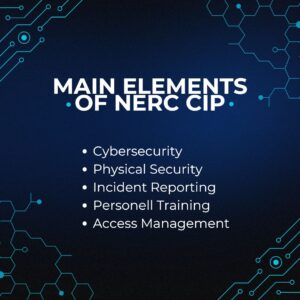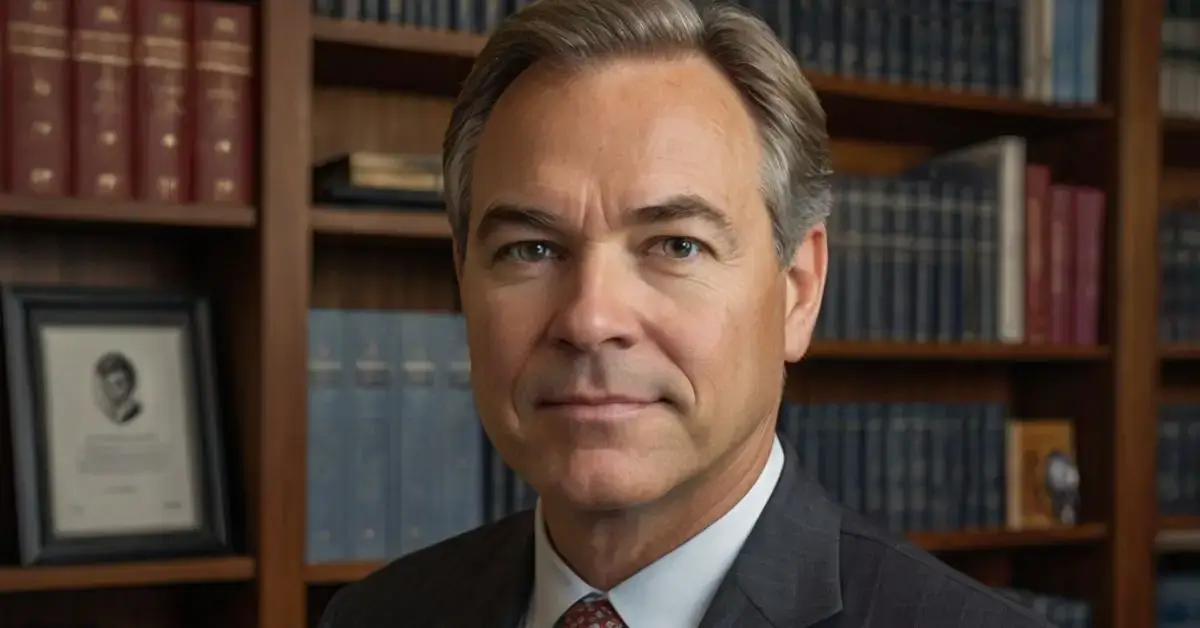CELEBRITY
7 Tips for Improving Tech Operations with NERC CIP Standards

Improving operational efficiency starts with safeguarding your critical infrastructure. Organizations in sectors such as energy, utilities, and manufacturing worldwide have increasingly relied on their critical infrastructures to ensure seamless operations.
Whether it’s an electric grid, water supply systems, or IT networks, these assets have to be safeguarded so that the security and reliability of services are not lost but also efficiently maintained. Any failure or security breach can spell a world of doomsday—financially and otherwise.
An important step in this direction is compliance with the NERC CIP standards. This guideline protects the physical and cybersecurity of the bulk electric system (BES) and serves as one key framework to protect the critical infrastructures of the energy sectors. NERC CIP principles can be very useful guidelines for organizations outside this industry as they seek to enhance their operational efficiencies as well as resiliencies.

In this article, we will discuss how strategic planning, cybersecurity measures, and regulatory compliance protect critical infrastructure and add to improved operational efficiency.
NERC CIP Standards: The Blueprint for Safeguarding Critical Infrastructure
While the nerc cip standards do represent a comprehensive framework with which the utilities and energy providers manage the safeguarding of critical infrastructure, the underlying principles of the standards themselves extend far beyond the utilities themselves and encompass more overall industries.
NERC CIP is part of a broader set of standards that focus on securing the electric system from both physical and cyber threats. The standards identify what is required with organizational action for securing critical infrastructure, therefore ensuring conformity with federal regulations.
The Main Elements of NERC CIP
- Cybersecurity: All information systems, including data that flows through them.
- Physical security: Inhibiting physical access to critical systems and infrastructure
- Incident reporting: Development of processes to report, assess, and respond to security breaches
- Personnel Training: Providing adequate education to employees that ensure the standards of security are maintained and possible threats recognized.
- Access Management: This involves preventing and controlling access to critical systems in a way that helps ensure that only authorized persons can touch sensitive infrastructure.

While NERC CIP is a requirement for organizations engaged in the business of energy, the relevance of security best practices is universal – whether it’s power generation or financial services. The drastic impact of security on achieving optimal business efficiency will be felt by whichever business model is yours.
How NERC CIP Enhances Operational Efficiency
Directly, the NERC CIP standards protect the grid; besides, they offer direct operational efficiency to organizations in this way:
Mitigation of Risk
Implementation of NERC CIP guidelines is often a starting point of risks that organizations have to get rid of before they hit their bottom lines or cause costly system disruptions. Protecting critical systems from cyber and physical threats helps companies avoid unplanned downtime, ensuring sustained productivity and profitability.
For example, cybersecurity measures such as patch management, firewalls, and malware protection prevent cyberattacks; which can lead to data breaches, system failure, and operational halts. Since these risks are mitigated by organizations ahead of time, they save the resultant monetary and operational costs of downtimes.
Simplified Processes
NERC CIP standards require organizations to put well-structured, well-documented processes in place for controlling both the cybersecurity and physical threats facing an organization. A standardized process within an organization leads to streamlined and more efficient operations. People are working more effectively because they know there are protocols to secure the critical infrastructure.
This is very true, especially for incident response. NERC CIP encourages structured incident reporting and response strategy, thereby minimizing the reaction time and effect of any breach. This, in turn, minimizes downtime and maximizes uptime.
Improved Worker Productivity
One of the greatest factors through NERC CIP is security training and access management. It reduces human errors, which are the leading cause of security breaches. Trained personnel are less likely to commit mistakes that may compromise the security of the vital systems to ensure smooth operations.
In addition to this, restricting access to critical infrastructure reduces the number of individuals who have access to critical systems and are handling such systems, thereby reducing the opportunity for operational failures that may arise from handling charitable, though not competent enough, personnel to handle such systems.
Compliance and Prevention of Penalties
Non-compliance with the NERC CIP and other regulatory requirements usually comes with heavy fines and penalties. With compliance, therefore, an organization is shielded from financial impacts, thus using its resources on further efficiency improvements rather than offsetting the regulatory fines or repairing its reputation.
Besides, to remain compliant is to maintain good standing with regulatory bodies and clients to create wholesome business relations and ultimately contribute towards long-term operational success.
Use of Technology in Infrastructure Protection
While it becomes mandatory for organizations to comply with regulatory frameworks like NERC CIP, protecting critical infrastructure cannot only be the work of complying with these frameworks. Organizations must use the latest technologies which can assist both with security and in terms of efficiency of operations. Some of the most relevant technologies used in the protection of critical infrastructure include the following:
Industrial Control System (ICS) Monitoring
The ICS monitoring systems allow businesses to monitor and observe the operational health of key infrastructure in real-time. The systems provide detection of anomalies, performance degradation, or a potential security breach before it can develop into the key problem issues. Continuous monitoring reduces downtime and optimizes system performance.
Artificial Intelligence and Machine Learning
AI and machine learning can be used to scan big data and detect patterns, which could not be recognized by any human. These technologies enable improving the detection of potential threats and response to them before such threats allow system crashes or security breaches. Automating the process for threat detection and response helps companies reduce bureaucratic hurdles and prevent these risks associated with human mistakes.
Automatic Compliance Management
Automated compliance management tools give organizations the ability to ensure that an organization is in line with standards, such as NERC CIP. Examples include sites that track security measures, auto-generate compliance reports, or areas of improvement. All of the above enable businesses to focus on operational efficiency, saving them time and resources.
Advanced Encryption and Firewalls
All sensitive data is protected with strong encryption and next-generation firewalls. Implementing these tools protects critical infrastructure, especially for industries that value the privacy and security of data. By preventing breaches, business organizations will save the price tags on the loss of data and downtime.
Conclusion
Improve your operational efficiency by safeguarding your most critical infrastructure. Whether you are applying the NERC CIP standards or are utilizing the latest in technological advancement in both cybersecurity and physical security, what’s most important is that protecting these essential systems is critical to maintaining operational continuity, reducing costs, and ensuring regulatory compliance.
Taking a proactive stance towards securing their critical infrastructure will enable businesses operating in all sectors, not only to enhance their resilience to threats but also to generate new depths of operational efficiency. In the first instance, investments in securing infrastructure today will pay off in terms of reliability, cost savings, and long-term business success.
FAQs
Why is the safeguarding of critical infrastructure important for operational efficiency?
Protecting critical infrastructure prevents costly disruptions, downtime, and security breaches that can harm operations. Their protection will, in turn, ensure the continuation of business by cutting costs as well as maintaining high productivity.
How does the NERC CIP standard help improve business?
NERC CIP standards prevent any kind of cyber and physical attacks on critical infrastructure; hence there is reduced risk of disruption for operations. Compliance with these standards brings about efficiency in processes, increases workforce productivity, and as a result, ensures long-term systems reliability.
What has technology come to contribute in the aspect of protecting critical infrastructure?
Technologies such as real-time monitoring, artificial intelligence for threat detection, and automated compliance management prevent system failures and security breaches. That is how all these tools enhance the security of infrastructure while minimizing downtime and associated losses due to inefficiency in the process of operation.
CELEBRITY
Who Was Marin Hopper?

Marin Hopper was an American actress, producer, and creative visionary best known for her unique perspective on film, fashion, and art. As the daughter of Hollywood icons Dennis Hopper and Brooke Hayward, she was born into a world filled with creativity, complexity, and charisma. Over her lifetime, Marin carved a distinct identity that blended her family’s cinematic legacy with her personal passion for storytelling and design.
Her life was a remarkable tapestry of art, memory, and reinvention—one that reflected both Hollywood’s golden glow and the quiet introspection of a woman determined to define herself beyond her famous last name.
Quick Answer
Marin Hopper was an American actress, producer, and creative director, known as the daughter of Dennis Hopper and Brooke Hayward. She balanced careers in film, fashion, and art, and was celebrated for preserving her family’s rich Hollywood heritage through her projects and brand collaborations.
Marin Hopper Bio:
| Category | Details |
|---|---|
| Full Name | Marin Brooke Hopper |
| Date of Birth | June 26, 1962 |
| Place of Birth | Los Angeles, California, USA |
| Date of Death | June 14, 2023 |
| Age at Death | 60 years |
| Nationality | American |
| Occupation | Actress, Producer, Fashion Designer, Creative Director |
| Known For | Daughter of Dennis Hopper and Brooke Hayward; Founder of Hayward Luxury Brand |
| Education | Brown University (Literature and Art History) |
| Notable Works | Colors (1988), The Last Movie, Dennis Hopper: Photographs 1961–1967 (editorial project) |
| Brand | Hayward (Luxury Handbag & Lifestyle Brand) |
| Years Active | 1980s – 2023 |
| Parents | Dennis Hopper (Actor, Director), Brooke Hayward (Actress, Author) |
| Siblings | Ruthanna Hopper, Henry Hopper, Galen Grier Hopper |
| Artistic Focus | Film, Fashion, Art Curation, Heritage Preservation |
| Philosophy | “Art and memory are inseparable — they tell us who we are.” |
| Legacy | Bridging Hollywood heritage with modern creative expression |
| Net Worth (Est.) | Approximately $2–3 million at time of passing (industry estimate) |
| Notable Traits | Creative Visionary, Elegant, Thoughtful, Authentic |
| Final Resting Place | California, United States |
Early Life and Family Background
Born in Los Angeles, California, Marin Hopper grew up in the heart of the American film industry. Her parents were both prominent figures—her father, Dennis Hopper, was a legendary actor and director known for Easy Rider and Apocalypse Now, while her mother, Brooke Hayward, was an actress and author celebrated for her book Haywire, a memoir about life in Hollywood’s golden age.
From a young age, Marin was exposed to creativity, eccentricity, and art. Her childhood home was filled with photographs, scripts, paintings, and the vibrant personalities of 1960s and 1970s Hollywood. Yet beneath the glitz, she also witnessed the challenges of fame—something that shaped her balanced, introspective outlook on life.
Education and Early Interests
Marin Hopper attended private schools in Los Angeles before studying literature and art history at Brown University. She developed a love for storytelling early on—whether through words, film, or visual art. This multidisciplinary curiosity would later define her professional journey.
In interviews, Marin often spoke about how her parents encouraged creative freedom:
“They taught me to see the world differently—not just through the lens of fame, but through the eyes of an artist,” she once said.
Acting Career and Film Involvement
Though she came from a cinematic dynasty, Marin Hopper chose a modest path in Hollywood. She made her acting debut in the early 1980s and appeared in several independent films. Rather than pursuing the traditional route of blockbuster fame, she gravitated toward artistic and independent projects.
Her appearances in Colors (1988) and The Last Movie (a project associated with her father’s legacy) reflected her appreciation for unconventional storytelling. While she didn’t pursue a long-term acting career, Marin’s work behind the scenes as a producer and curator became her true calling.
Transition into Art and Design
Beyond Hollywood, Marin Hopper was deeply immersed in the world of art, fashion, and photography. She worked as an editor and creative consultant for renowned publications such as Elle, Vogue, and Vanity Fair. Her work was characterized by a sophisticated understanding of aesthetic balance—drawing from both her cinematic upbringing and artistic instincts.
In the 2000s, she founded Hayward, a luxury handbag brand inspired by her mother Brooke Hayward’s timeless style and the family’s Hollywood history. The brand symbolized elegance, nostalgia, and craftsmanship—a reflection of Marin’s passion for storytelling through design.
Marin Hopper’s Brand: The Hayward Collection
The Hayward Collection was more than a fashion label—it was an homage to Marin’s lineage and creative spirit. Each piece combined vintage Hollywood flair with modern sophistication. Her designs were carried by influential figures and featured in top fashion magazines.
She once explained:
“Hayward isn’t just a name; it’s a legacy. It’s about family, heritage, and the beauty of things that last.”
Under Marin’s direction, the brand gained attention for its understated luxury and emotional storytelling, setting it apart from mainstream fashion houses.
Personal Life and Values
Marin Hopper valued privacy and introspection, living a life grounded in creativity and reflection. While her family history included fame and turbulence, Marin often spoke about her desire to maintain balance.
She was also a devoted mother and philanthropist, supporting initiatives in art education, preservation, and mental health awareness. Friends described her as graceful, intelligent, and deeply empathetic—a quiet yet powerful presence who made a lasting impression on those around her.
Marin Hopper’s Legacy in Hollywood and Fashion
Marin Hopper passed away in 2023, leaving behind a remarkable legacy of creativity, integrity, and resilience. Her life represented the convergence of old Hollywood elegance and modern artistic sensibility. She not only carried forward her family’s heritage but also contributed her own voice to the evolving narrative of American art and culture.
Industry peers admired her for blending authenticity with artistry—a rare quality in an era dominated by fast fame. Her work continues to inspire emerging designers, producers, and storytellers who value depth over superficiality.
Comparison Table: Marin Hopper vs. Contemporary Hollywood Producers
| Feature | Marin Hopper | Contemporary Producers |
|---|---|---|
| Artistic Focus | Emphasized independent and creative projects | Often prioritize commercial appeal |
| Fashion Influence | Founded Hayward luxury brand | Few producers expand into fashion |
| Family Legacy | Daughter of Dennis Hopper and Brooke Hayward | Usually industry self-starters |
| Public Image | Low-profile, art-focused | Media-driven, celebrity-centered |
| Philosophy | Blending nostalgia with innovation | Focused on modern trends and mass reach |
(Data sourced from fashion and film industry publications, 2023)
Influence on Art and Cultural Memory
Marin Hopper was also known for curating exhibitions and preserving her family’s vast art archives. Her work with museums and cultural institutions helped maintain the historical significance of her parents’ era.
Through her curation and fashion work, she contributed to what experts call “the preservation of aesthetic memory”—keeping mid-century Hollywood artistry alive for new generations.
As one art critic noted, “Marin Hopper’s eye for composition was not learned; it was inherited—and refined through experience.”
Publications and Writing
Aside from acting and fashion, Marin Hopper was an eloquent writer. She contributed essays, fashion pieces, and personal reflections to leading magazines. Her writings explored the intersection of memory, identity, and creativity, often weaving personal anecdotes with cultural commentary.
Her most significant publication involvement was curating and editing Dennis Hopper: Photographs 1961–1967, a book showcasing her father’s photography work. Her role in that project demonstrated her dedication to preserving not only artistic heritage but also family memory.
Challenges and Resilience
Despite her privileged background, Marin Hopper faced emotional and personal challenges. The loss of her father in 2010 was a turning point in her life, motivating her to honor his memory through her work.
Rather than being defined by tragedy, she transformed grief into creative fuel. Her ability to rebuild, reinvent, and inspire made her a symbol of strength within Hollywood’s artistic community.
Recognition and Awards
While Marin Hopper did not seek fame or awards, she was widely respected in creative circles. Her fashion label received critical acclaim for craftsmanship and storytelling, and she was frequently invited to speak at art and design panels.
Her unique combination of film, fashion, and art experience made her a multidisciplinary creative admired by peers in multiple industries.
EXPERT ANSWERS
1. Who was Marin Hopper?
Marin Hopper was an American actress, producer, and designer, known for her work in film, fashion, and art, and as the daughter of Dennis Hopper and Brooke Hayward.
2. What was Marin Hopper famous for?
She gained recognition for her independent film projects and for founding the Hayward luxury handbag brand, inspired by her family’s Hollywood legacy.
3. How did Marin Hopper contribute to art and fashion?
Through her brand, curation, and writing, she bridged classic Hollywood aesthetics with contemporary design sensibilities.
4. What is the Hayward Collection?
The Hayward Collection is a luxury fashion brand founded by Marin Hopper, emphasizing craftsmanship, heritage, and timeless elegance.
5. When did Marin Hopper pass away?
Marin Hopper passed away in 2023, leaving a legacy that continues to influence Hollywood and fashion communities.
Cultural Significance and Lasting Impact
Marin Hopper’s story isn’t just about fame—it’s about artistic identity, memory, and legacy. She demonstrated how a person can honor their heritage without being overshadowed by it. Her life was a dialogue between the past and the present, reflecting the evolution of creativity in America.
Today, her contributions are celebrated in retrospectives, fashion archives, and cultural studies that explore the interplay of art, film, and fashion.
Influence of Her Parents: Dennis Hopper and Brooke Hayward
Marin’s life was deeply shaped by her parents’ influence. Dennis Hopper, known for his rebellious artistry, taught her to embrace creative freedom. Brooke Hayward, known for her elegance and insight, instilled in Marin a sense of refinement and purpose.
Marin often said that her parents’ combination of wild creativity and quiet grace defined her worldview—a balance between chaos and control that inspired her own work in design and storytelling.
Personal Philosophy and Artistic Vision
Marin Hopper believed that art and memory are inseparable. Whether designing a handbag or curating a photo collection, she saw each creative act as a way to preserve emotion and history.
Her philosophy aligned with a broader cultural movement toward sustainability and authenticity in art—favoring depth and story over trends.
“We live in images,” she once remarked, “and those images tell us who we were, who we are, and who we might become.”
Life Beyond Hollywood
Though raised among celebrities, Marin often distanced herself from Hollywood’s spotlight. She found peace in artistic communities and intimate creative circles. Her approach to life was holistic—combining mindfulness, family, and artistic integrity.
Her home, filled with art, vintage furniture, and family photos, reflected her philosophy: beauty lies in authenticity and imperfection.
Continuing Her Legacy
Even after her passing, Marin Hopper’s work continues through the Hayward brand and her archived creative projects. Collectors and fans view her designs as extensions of her spirit—quietly powerful, nostalgic, and timeless.
Cultural historians continue to study her contributions to modern American artistry, especially her ability to merge classic aesthetics with personal narrative.
Conclusion:
Marin Hopper was more than the daughter of two Hollywood legends—she was a visionary who created her own path through art, fashion, and storytelling. Her influence transcends the screen, living on in her creative works and the memories she shaped through her artistry.
Her story reminds us that legacy is not inherited—it’s built. And through her timeless contributions to American culture, Marin Hopper continues to inspire dreamers, artists, and storytellers around the world.
FAQ’s
1. What were Marin Hopper’s main professions?
She was an actress, film producer, creative director, and fashion designer known for her work across multiple industries.
2. What inspired Marin Hopper’s Hayward brand?
The brand was inspired by her mother’s classic Hollywood style and the family’s 20th-century heritage of art and design.
3. Did Marin Hopper write any books or publications?
Yes, she contributed to several fashion and art magazines and helped curate her father’s photography collection in published form.
4. How was Marin Hopper connected to old Hollywood?
As the daughter of Dennis Hopper and Brooke Hayward, Marin grew up surrounded by film legends and artistic icons of mid-century Hollywood.
5. Was Marin Hopper married or had children?
Marin Hopper maintained a private life, though she was known to be a loving mother and close friend to many in creative circles.
6. How is Marin Hopper remembered today?
She is remembered as a multidimensional artist who blended film, fashion, and art into a legacy defined by elegance, creativity, and authenticity.
CELEBRITY
How Shannon Reardon Swanick Shapes Civic Engagement

If you’re a community leader, nonprofit professional, educator, or policy advocate, you know the challenge: building programs that are not just inspiring but also sustainable, measurable, and inclusive. Many leaders wrestle with how to engage underserved groups, empower youth, and influence policy without burning out or losing direction.
That’s where Shannon Reardon Swanick comes in. Her work exemplifies how empathy-driven leadership and collaborative strategies can transform communities. By blending data with compassion, she’s developed initiatives that close equity gaps, expand opportunity, and prove that real change is possible when you start by listening.
Shannon Reardon Swanick Bio:
| Profile Element | Details |
|---|---|
| Full Name | Shannon Reardon Swanick |
| Known For | Community leadership, mentorship programs, civic engagement initiatives |
| Core Programs | Bright Futures Mentorship, Digital Equity Labs, Civic Engagement Academy |
| Leadership Style | Empathy-driven, data-informed, collaborative |
| Key Contributions | Improved student graduation rates, expanded digital access, youth leadership |
| Policy Impact | Advocacy for education funding and rural school equity |
| Target Audience Influence | Community leaders, educators, mentors, policy advocates, women in leadership |
| Signature Model | Mentorship Circles Model |
| Impact Metrics | 600+ households connected digitally, increased student engagement |
| Inspirational Role | Women and underrepresented groups in leadership |
Quick Answer
Shannon Reardon Swanick is a community leader and mentor recognized for creating programs like Bright Futures, Digital Equity Labs, and the Civic Engagement Academy that strengthen youth leadership, promote digital equity, and influence education policy through empathy-driven, data-informed approaches.
Who Is Shannon Reardon Swanick?
Shannon Reardon Swanick is best known for her role in creating community mentorship programs that deliver measurable outcomes. Her leadership is marked by three core qualities:
- Empathy — placing people first and listening before acting.
- Data-informed programs — using numbers to guide decisions, not to overshadow lived experiences.
- Collaboration — working across schools, nonprofits, and policymakers to ensure long-term impact.
Her initiatives — including the Bright Futures Mentorship Program, Digital Equity Labs, and Civic Engagement Academy — showcase how civic engagement and equity-focused programs can scale.
Key Programs and Impact
Bright Futures Mentorship Program
- Focused on at-risk students and absenteeism.
- Adopted a Mentorship Circles model that built small, trusting groups.
- Led to significant gains in graduation rates and decreased absenteeism.
Search intent match: “Shannon Reardon Swanick mentorship Bright Futures impact”
Digital Equity Labs
- Connected over 600 households with essential digital tools.
- Reduced barriers to learning for low-income families.
- Highlighted the importance of digital equity initiatives in closing the opportunity gap.
Search intent match: “Digital Equity Labs Shannon Reardon Swanick 600 households”
Civic Engagement Academy
- Designed for youth ages 11–13 to explore civic leadership.
- Taught skills in advocacy, decision-making, and community building.
- Helped students see themselves as future leaders.
Search intent match: “Civic Engagement Academy Shannon Reardon Swanick youth leadership”
Leadership Philosophy: Empathy Meets Data
What makes Shannon Reardon Swanick’s empathy-driven leadership style stand out is her ability to balance heart and metrics. While many leaders lean too heavily on either gut instinct or data sheets, she combines both:
- Empathy-driven leadership ensures people feel heard and valued.
- Data-informed programs track real outcomes, from absenteeism rates to digital adoption.
- Collaborative leadership strategies engage teachers, parents, policymakers, and nonprofits.
This dual approach builds programs that are both human-centered and scalable.
Policy Advocacy and System-Level Change
Swanick’s work isn’t just local. Her education funding advocacy pushed policymakers to increase investment in rural schools, ensuring equity where it’s often most lacking.
Search intent match: “Education policy advocacy Shannon Reardon Swanick rural schools”
This demonstrates that community leaders can — and should — influence broader systems, not just grassroots programs.
How to Replicate Her Model
If you’re wondering how to replicate Shannon Reardon Swanick mentorship model, start with these principles:
- Listen first — understand the needs before proposing solutions.
- Build small circles — trust is easier in smaller groups.
- Track data — define measurable goals and outcomes.
- Advocate upward — connect grassroots work to policy change.
- Empower youth — make the next generation part of today’s solutions.
Comparison Table: Shannon Reardon Swanick’s Core Programs
| Program | Focus Area | Impact Metrics | Core Strategy |
|---|---|---|---|
| Bright Futures Mentorship | Student engagement | Improved graduation & reduced absenteeism | Mentorship circles model |
| Digital Equity Labs | Digital access | 600+ households connected | Digital equity initiatives |
| Civic Engagement Academy | Youth civic leadership | Leadership skills for ages 11–13 | Collaborative leadership strategies |
EXPERT ANSWERS
What leadership style does Shannon Reardon Swanick use?
She uses an empathy-driven leadership style combined with data-informed programs. This ensures that her initiatives are people-first while also accountable.
What is the impact of Bright Futures under Shannon Reardon Swanick?
The program increased graduation rates and reduced absenteeism by creating supportive mentorship circles that built trust among students.
How does Digital Equity Labs help communities?
It tackles the digital divide by providing devices and internet access to 600+ households, ensuring students can fully participate in online education.
Can Shannon Reardon Swanick’s methods be applied to other communities?
Yes. Her focus on listening, collaboration, and data tracking makes her model adaptable to nonprofits, schools, and civic organizations anywhere.
FAQ’s
1. How can mentors apply Shannon Reardon Swanick’s mentorship approach?
Mentors can adopt her circle model, which groups participants into small, trust-based clusters. This format encourages openness, accountability, and support. By combining personal relationships with structured goals, mentors can drive measurable improvements in attendance, performance, and personal growth.
2. What makes Shannon Reardon Swanick a role model for women in leadership?
Her journey reflects resilience, empathy, and advocacy, showing that leadership isn’t about authority but influence. For women and underrepresented groups, her success offers proof that collaborative leadership strategies can shift both culture and policy.
3. How can policy advocates use her example?
Policy advocates can look at how she linked grassroots outcomes (like higher graduation rates) to legislative change (more school funding). This connection between data and storytelling is critical in winning over policymakers and securing systemic reform.
Author Bio
Written by Emily Carter, a content writer specializing in SEO-driven educational and nonprofit content. With a background in communications and digital strategy, Emily creates content that helps leaders and organizations scale their impact through storytelling and data-informed insights.
Sources & References
- https://tesseract.academy/shannon-reardon-swanick-what-i-learned-about-building-strong/
- https://study4sure.com/shannon-reardon-swanick/
- https://coruzant.com/women-in-tech/shannon-reardon-swanicks/
CELEBRITY
Gregory B. Wormuth: A Comprehensive Overview of His Contributions and Impact

Gregory B. Wormuth is a name that resonates across various professional circles, known for his expertise and influential work in his field. Whether you’re familiar with his accomplishments or just discovering his impact, this article delves deep into his career, achievements, and the lasting legacy he has built.
Who Is Gregory B. Wormuth?
Gregory B. Wormuth has established himself as a respected figure through years of dedication and innovation. His work spans multiple disciplines, showcasing a blend of strategic thinking, leadership, and problem-solving skills. While specific details about his background may vary, his reputation for excellence remains consistent.
Early Career and Professional Growth
Gregory B. Wormuth’s journey began with a strong educational foundation, equipping him with the knowledge and skills necessary to excel. Over time, he transitioned into roles that demanded both technical proficiency and managerial acumen. His ability to adapt and lead in dynamic environments set him apart early in his career.
Key Achievements and Milestones
Throughout his professional trajectory, Gregory B. Wormuth has achieved numerous milestones. From spearheading high-impact projects to mentoring emerging talent, his contributions have left a lasting imprint. His work often emphasizes efficiency, scalability, and long-term value—qualities that define true leadership.
Gregory B. Wormuth’s Influence in His Industry
Gregory B. Wormuth’s impact extends beyond individual accomplishments. He has played a pivotal role in shaping industry standards, advocating for best practices, and fostering innovation. His insights are frequently sought after, reflecting his standing as a thought leader.
Leadership and Strategic Vision
One of Gregory B. Wormuth’s defining traits is his strategic foresight. He has consistently demonstrated an ability to anticipate trends and position organizations for success. His leadership style blends analytical rigor with a people-centric approach, ensuring sustainable growth.
Contributions to Innovation
Innovation lies at the heart of Gregory B. Wormuth’s work. Whether through process improvements, technological advancements, or collaborative initiatives, he has pushed boundaries to drive meaningful change. His efforts have often set benchmarks for others to follow.
Comparing Gregory B. Wormuth’s Approach to Industry Standards
To better understand Gregory B. Wormuth’s contributions, let’s evaluate his methodologies against key industry benchmarks. The following table highlights five critical aspects of his work:
| Feature | Gregory B. Wormuth’s Approach | Industry Standard |
|---|---|---|
| Cost Efficiency | Prioritizes long-term ROI | Often short-term focused |
| Operational Efficiency | Streamlines workflows for maximum output | Varies by organization |
| Ease of Implementation | User-friendly, scalable solutions | Can be complex or rigid |
| Scalability | Designs systems for growth | Limited adaptability |
| Benefits | Holistic value creation | Narrowly defined outcomes |
This comparison underscores how Gregory B. Wormuth’s strategies often exceed conventional expectations, delivering superior results.
Lessons from Gregory B. Wormuth’s Career
Examining Gregory B. Wormuth’s professional journey offers valuable insights for aspiring leaders. His emphasis on adaptability, continuous learning, and ethical decision-making provides a blueprint for success.
Embracing Change and Challenges
Gregory B. Wormuth’s career highlights the importance of resilience. By embracing challenges as opportunities, he has consistently turned obstacles into advantages—a mindset worth emulating.
The Role of Mentorship
Another key takeaway is his commitment to mentorship. Gregory B. Wormuth has actively supported the next generation of professionals, reinforcing the idea that leadership is about lifting others.
Why Gregory B. Wormuth’s Work Matters Today
In an ever-evolving professional landscape, Gregory B. Wormuth’s principles remain relevant. His focus on sustainable growth, innovation, and ethical leadership serves as a guide for modern organizations navigating complexity.
Future Implications
Looking ahead, the methodologies championed by Gregory B. Wormuth are likely to gain even greater significance. As industries continue to evolve, his forward-thinking strategies will undoubtedly influence future best practices.
FAQs
Who is Gregory B. Wormuth?
Gregory B. Wormuth is a recognized professional known for his leadership, strategic vision, and contributions to his industry. His work emphasizes innovation, efficiency, and long-term value creation.
What industries has Gregory B. Wormuth influenced?
While specific industries may vary, Gregory B. Wormuth’s expertise spans areas requiring strategic planning, operational efficiency, and scalable solutions, making his impact broad and versatile.
What makes Gregory B. Wormuth’s approach unique?
His focus on sustainable ROI, adaptability, and mentorship sets him apart. Unlike conventional methods, his strategies prioritize holistic growth and scalability.
How can professionals learn from Gregory B. Wormuth’s career?
By studying his resilience, leadership style, and commitment to innovation, professionals can adopt similar principles to advance their own careers.
What are some key achievements of Gregory B. Wormuth?
His milestones include driving high-impact projects, setting industry benchmarks, and mentoring future leaders—all while maintaining a focus on ethical practices.
Why is Gregory B. Wormuth’s work relevant today?
In a rapidly changing world, his emphasis on strategic foresight and sustainable practices provides a roadmap for organizations seeking long-term success.
Gregory B. Wormuth’s legacy is a testament to the power of visionary leadership. By understanding his contributions, professionals across industries can draw inspiration to drive their own success.

 Cartoon5 months ago
Cartoon5 months agoUnlocking the Potential of Nekopoi.care: A Comprehensive Guide

 Game2 years ago
Game2 years agoExploring Aopickleballthietke.com: Your Ultimate Pickleball Destination

 BUSINESS2 years ago
BUSINESS2 years agoUnraveling the Mystery of 405 Howard Street San Francisco charge on Credit Card

 BUSINESS5 months ago
BUSINESS5 months agoWhat Companies Are In The Consumer Services Field

 HOME IMPROVEMENT2 years ago
HOME IMPROVEMENT2 years agoVtrahe vs. Other Platforms: Which One Reigns Supreme?

 ENTERTAINMENT1 year ago
ENTERTAINMENT1 year agoUnderstanding Bunkr Album: A Comprehensive Guide

 ENTERTAINMENT2 years ago
ENTERTAINMENT2 years agoThe Ultimate Guide to MP3Juices: Free Music Download

 TECHNOLOGY2 years ago
TECHNOLOGY2 years agoThe Guide to Using Anon Vault for Secure Data Storage
















